Black & White along the Seaside
| On a winter Sunday morning, E.656.078 with the direct train to Milan enters San Remo beside the famous Passeggiata Imperatrice (6 February 2000). |

| The ALn 663 railcars to Cuneo have just left San Remo, which is now replaced by the new underground station. |
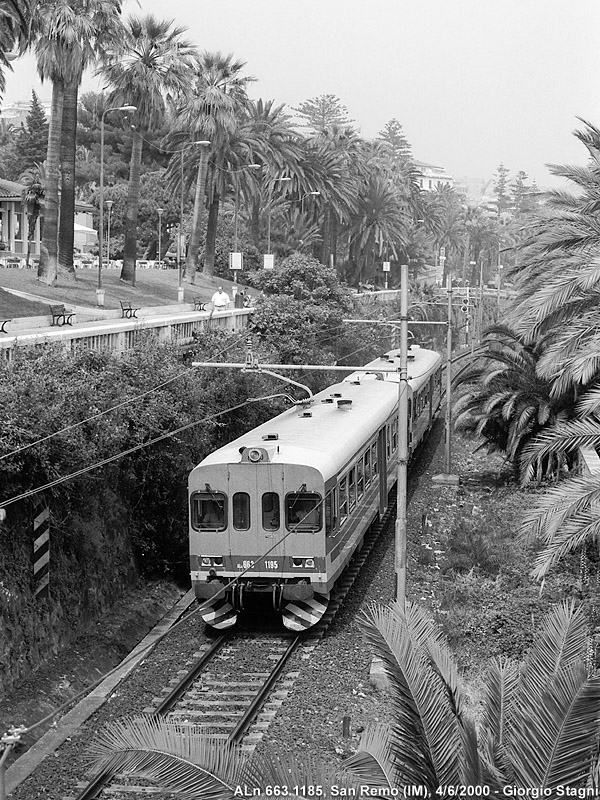
| The special freight train Ventimiglia - Imperia Oneglia is pulled by the historical loco E.626.294, in Ospedaletti, on 12 May 2001. Four months later, the San Lorenzo - Ospedaletti section of the Riviera Line is replaced by a double-track tunnel. |
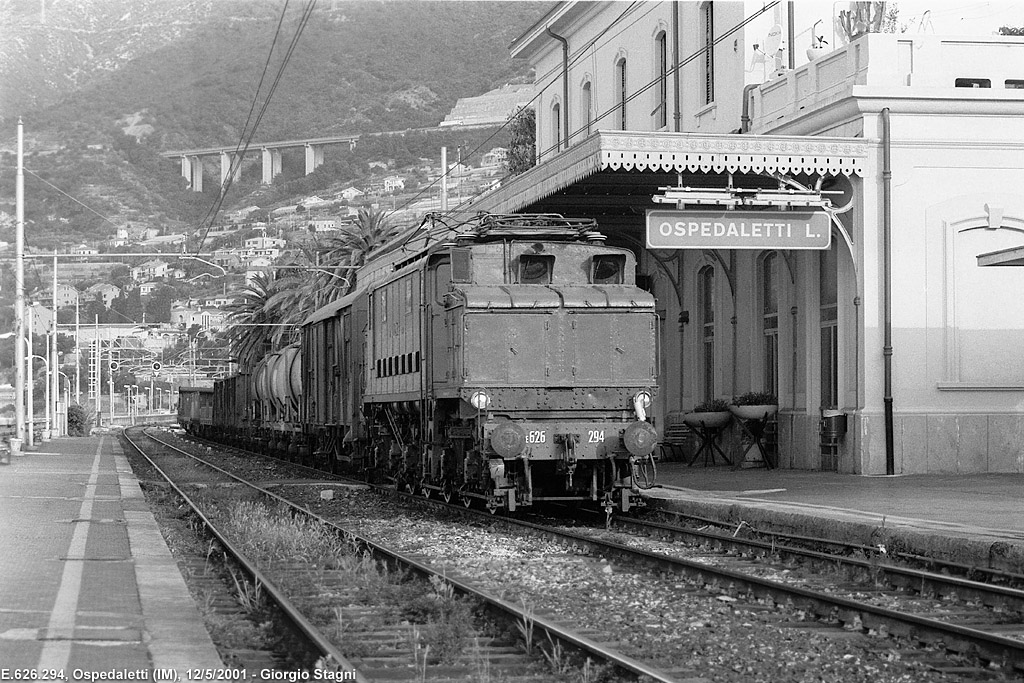
Electric Engines
Chapter 2 |
| E.636.262 poses for a portrait in the solemn scenery of Milan Centrale, on 23 March 1993. |
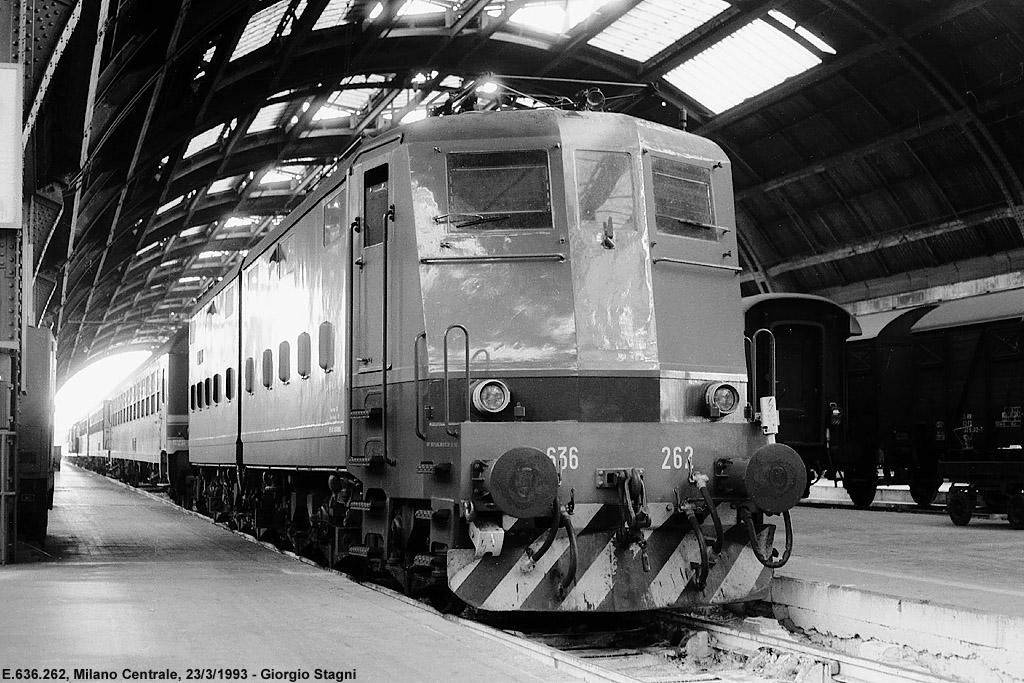
| The threephase engine E.554.078 is waiting for withdrawal in Alessandria depot, on 2 June 1984 (photo G. Demuru). |
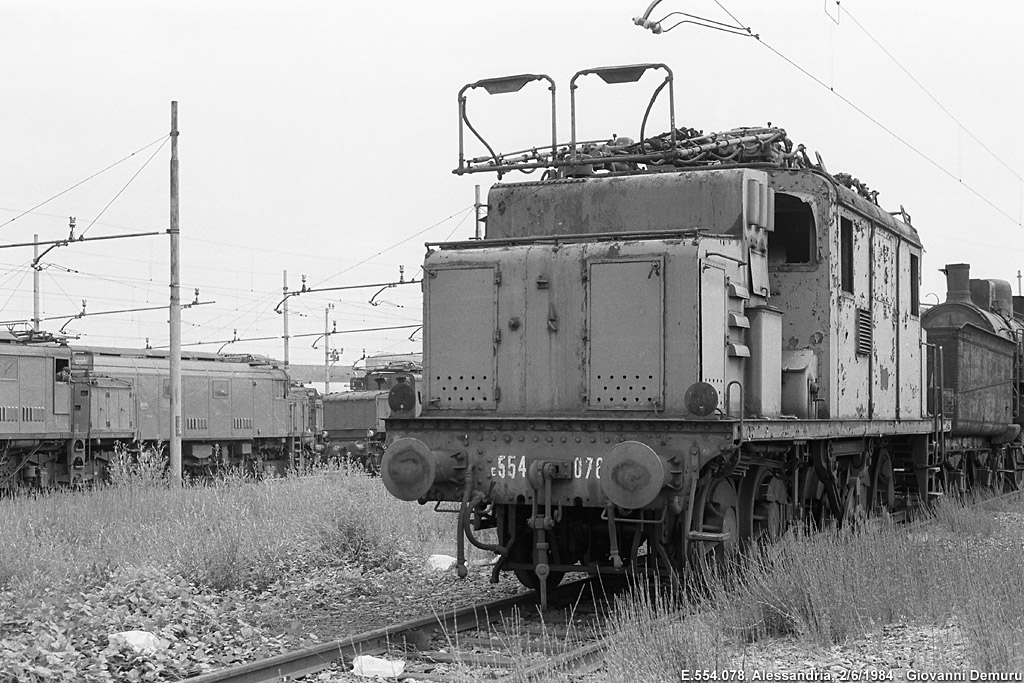
| E.424, Novara, 29 July 1995. |

| E.428.058, one of the two 1st-series units still working for historical trains, in Domodossola on 6 December 1997. |
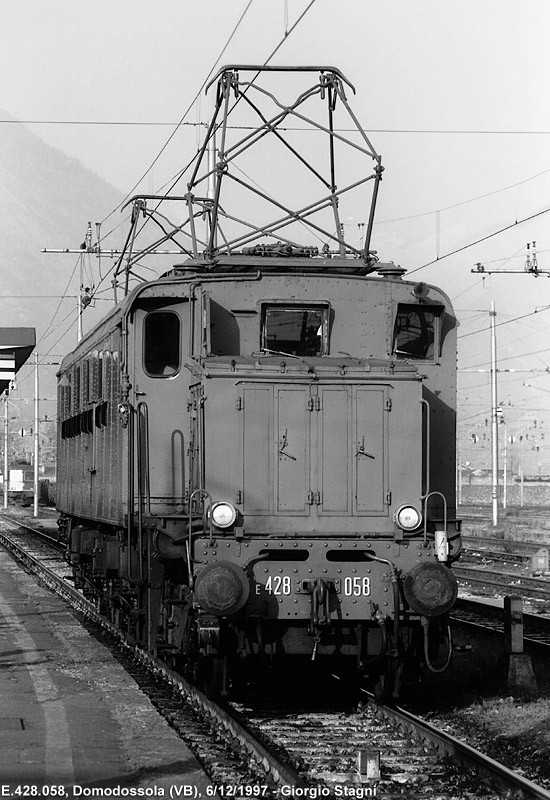
| E.428.174 still in regular service, in Milano Porta Romana, on 20 February 1988 (photo G. Demuru). |
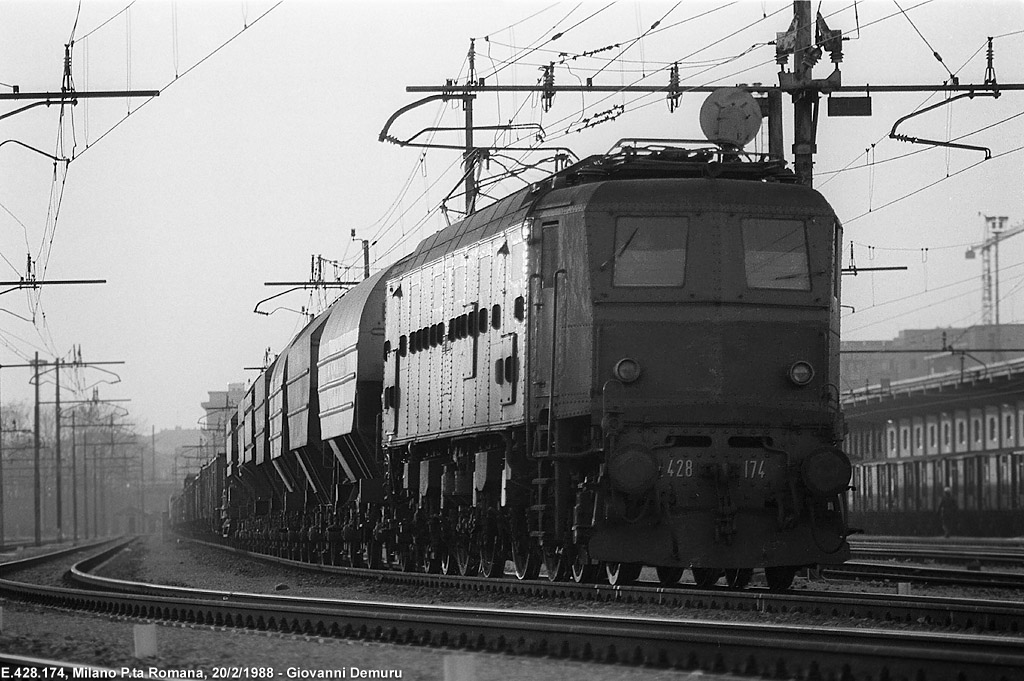
| Later on, E.428.174 was preserved in Luino, thanks to Verbano Express association. |
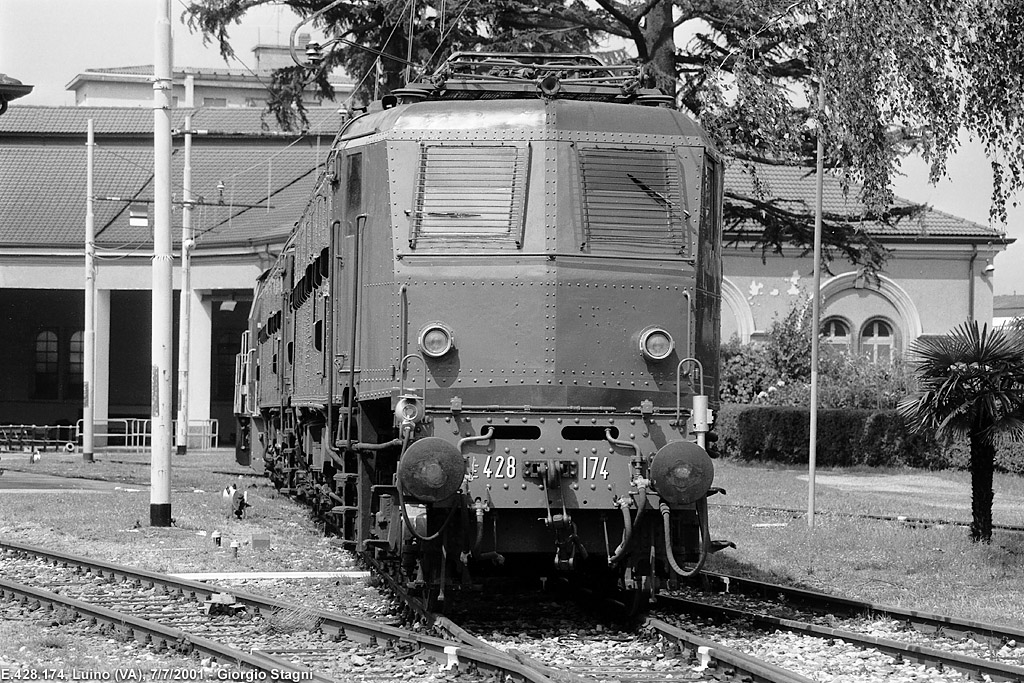
Foto 20-29/77 << Pag. precedente ^ Indice ^ Pag. successiva >>
[Index of Engines] [Indice della sezione / This Section] [Vai all'italiano]
